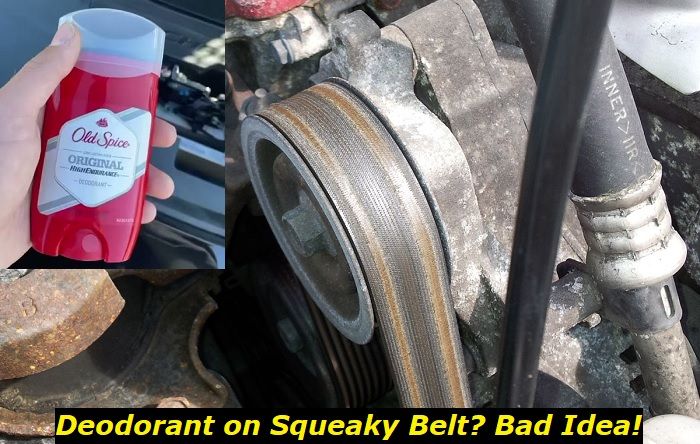Has your Ford Escape not been achieving the cruising speeds you are used to? Maybe you were trying to overtake a slowpoke ahead of you, but your car refused to cooperate. Do not worry because you are likely experiencing a boost leak, something that any driver of a turbocharged car is likely to experience.
P0299 code highlights
- Level of urgency:Medium
- Possible culprits:Turbocharger issues, fallen off or cracked pipes, air leak problems
- Price for repair:$150 - $800
- If neglected:Loss of power, harsh work, poor efficiency
- DIY repairs:Impossible
- Can you drive?Carefully

The Meaning of the P0299 Code in Your Ford Escape
Your Ford EscapeThe P0299 code indicates that your Ford Escape's turbo has excessively low power output. The electronic control unit will trigger this code if it detects boost levels that are below the recommended range. The P0299 code will remain until your repair the problem or clear the code.
It is not advisable to clear the code because this does not solve your Ford Escape's underlying boost leak problem. Think of a boost leak as an air/pressure leak in your otherwise airtight components.
Your car's turbocharger is connected to the engine that is made up of a multitude of components connected by pipes, hoses, clamps, and joints. If any of these components get loose or damaged, a boost leak occurs because the components cannot handle the air pressure from the intake system.
Turbocharged engines generate suitable pressure to ensure the components are performing optimally. If any of the components cannot handle the pressure, air will leak out and cause a boost leak.
The P0299 error code is common because the pipes and hoses connecting the turbo and the engine are subjected to the double-edged sword of engine heat and turbo pressure. A weak engine mount paired with torque may damage a pipe and cause a boost leak. Though boost leaks at times occur in non-turbo engines, the odds are much lower because they have fewer hoses, pipes, and clamps than non-turbo engines.
What to Do When Facing a Boost Leak Problem in Your Ford Escape
You can drive your Ford Escape despite the boost leak problem, but you will have to get used to people honking at you on the highway because you will likely be stuck under the speed limit. Further, drivers are advised to address boost leaks immediately because they are highly likely to damage your turbocharger and engine.
You must schedule an appointment for your Ford Escape at the dealership or reputable auto repair shop. Experienced mechanics will have no trouble detecting and repairing the leak. The longer you wait to repair your boost leak problem, the heavier the price you will likely pay.
Other Signs of a Boost Leak Problem in Your Ford Escape
Your Ford Escape will do more than give a P0299 error when suffering a boost leak. The boost leak affects engine performance and causes symptoms like:
- Odd noises from your engine block
- Loss of accelerating power
- Increased fuel consumption
- Illuminated check engine light
- Black smoke pouring from the exhaust
How to Detect and Repair Boost Leakage in Your Ford Escape
1. Using a Boost Leak Testing Device
The first step to fixing your P0299 error is determining the source of the boost leak. It is easier than it sounds, especially if you have a boost leak-testing device. Even professional mechanics prefer to rely on this efficient gadget rather than spend valuable time inspecting and testing your engine components for the source of the leak.
The boost leak tester enables you to pressurize your Ford Escape's system without starting or bringing it up to load. It is very simple to use. Many DIY auto repair enthusiasts have saved time and money by using a boost leak tester. All you need to do is remove your turbo inlet, place it in the tester and attach an air compressor.
After waiting for pressure to build up, you should be able to hear a low hissing sound from the source of the boost leak. Alternatively, you can apply washer fluid on the couplers, and vacuum lines, then keep watch for bubbles that indicate the source of the leak. All drivers of turbocharged cars should include a boost leak tester in their toolkit.
2. Inspecting and Testing Your Engine Components
Drivers who cannot access or would rather not use a boost-leaking testing device can perform a physical inspection to detect the source of the problem.
- Inspect Clamps and Couplers
Clamps and couplers are the leading cause of boost leaks. Most drivers develop the boost leak after performing modifications on their Ford Escapes that involve removing charge piping. The modifications may have been improperly performed, or a clamp may have been left untightened by you or the mechanic who installed the modification. Engines are complex machines. One hair out of place is all it takes to cause a malfunction.
You should begin at your compressor housing and inspect closely all the way to the intercooler and the throttle body. You should ensure that all clamps are well secured and that none of your couplers have holes.
If you want to play it safe and avoid future boost leak problems, you should consider replacing your ringworm clamps with sturdy t-bolt clamps. The latter secure better and are also less likely to chaff a hole into your coupler.
If your clamps are couplers are in good shape, you should inspect your vacuum lines.
- Inspect Vacuum Lines
Drivers who have installed aftermarket boost components, e.g., gauge, controller, or wideband, should ensure that their vacuum lines are properly plugged. These modifications usually involve the relocation of major vacuum lines. Any errors could result in a boost leak.
Begin at the compressor housing and follow the vacuum line leading to your wastegate controller. Ensure the vacuum line is the right size and has a tight seal. Vacuum lines of incorrect size will not be compatible with the seal and thus shall generate a boost leak. You should then inspect the other vacuum lines for leaks.
How to Avoid Boost Leak Problems
Avoiding a boost leak is a great way to ensure your engine runs smoothly and that your turbocharger does not experience unnecessary wear and tear. Here are a few tips to ensure your Ford Escape never suffers a boost leak again.
- Before installing your couplers, ensure they are clean. Any oil-saturated couplers should be disposed of and replaced with new ones.
- Use a pipe with welded or rolled beads because they mechanically lock into the couple and prevent the pipe from slipping out.
- Ensure your clamps are not tightened in a crooked way that allows them to loosen up over time.
- Use high-quality steel clamps that guarantee sufficient space between the rolled beads and intercooler/throttle body for efficient clamp engagement.
Other Causes of Boost Leak Problems
The boost leak in your Ford Escape could be caused by several factors, including:
1. Defective Turbocharger
Turbochargers are famous for their reliability. They rarely malfunction. However, should an unlikely malfunction occur in your Ford Escape's turbocharger, it will likely cause your engine to run lean. Your boost sensors are the most likely culprits because the internal components rarely malfunction. This will trigger the P0299 code.
Solution:
If you suspect a bad boost sensor is to blame, try disconnecting it and check how this affects your car's performance. If your Ford Escape runs better with disconnected sensors, they are likely defective. Turbocharger diagnosis and repair are complex tasks that are best left to experienced mechanics. If you suspect your Ford Escape's turbocharger is defective, you should consult your dealership or a reputable auto repair shop.
2. Leakage of Your Exhaust Gas Recirculation System
Drivers are often quick to blame their turbochargers for the boost leak problem and rarely consider their EGR system may be to blame. A leakage or blockage in your EGR system may trigger the P0299 code.
Solution:
You will need to take your Ford Escape for professional diagnosis and repair. If an experienced mechanic determines that your EGR system is to blame for the boost leak, they shall replace, clean, or repair it.
3. Wiring Problems
Damaged wiring will struggle to prove the right amount of power to your turbocharger. Resultantly, your turbocharger will likely underperform. Your car's ECU will detect this underperformance and may trigger the P0299 code.
Solutions:
You need to locate the damaged wires and replace or repair them. This is easier said than done. It is best to rely on experienced mechanics because though they cost a pretty penny, they save you lots of time and effort.
Final words
Ford Escape boost leaks problems should be diagnosed and repaired as soon as you notice the problem. This is the best way to reduce repair costs by minimizing the extent of the damage.
About the authors
The CarAraC research team is composed of seasoned auto mechanics and automotive industry professionals, including individuals with advanced degrees and certifications in their field. Our team members boast prestigious credentials, reflecting their extensive knowledge and skills. These qualifications include: IMI: Institute of the Motor Industry, ASE-Certified Master Automobile Technicians; Coventry University, Graduate of MA in Automotive Journalism; Politecnico di Torino, Italy, MS Automotive Engineering; Ss. Cyril and Methodius University in Skopje, Mechanical University in Skopje; TOC Automotive College; DHA Suffa University, Department of Mechanical Engineering






Add comment